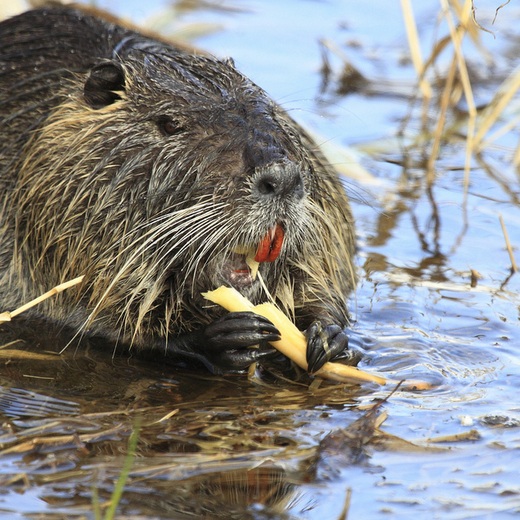No, Vampire Bats are Not in Texas. Yet.

Photo courtesy of DiveOfficer: www.flickr.com/photos/diveofficer/
If some climate change models are correct, vampire bats might some day move in to Texas.
Halloween is more than a month away, but we’re already hearing about vampires.
Last week, reports that vampire bats bit a man in Central Texas sent shivers down more than a few spines. The attack, as first reported by KSAT in San Antonio, allegedly took place during a hunting trip in Johnson City. The man said he and his friends were set upon in their sleep by the creatures, that bite their prey and then lick the blood from the wounds.
And what reporter can resist a good vampire bat story?
I know I can’t.
So, smelling blood, I started making some phone calls. The man who said he was bitten did not return requests for comment, but I did hear from Ron Van Den Bussche.
He’s a professor of zoology at Oklahoma State University, and what he told me punched some holes in the story.
“My first reaction is … they’re not vampire bats. It’s a hoax,” Van Den Bussche said.
Contrary to the claim of that news report, vampire bats are not a “somewhat regular” occurrence in Texas, according to Van Den Bussche. In fact, the species that reportedly attacked the camper has never been spotted in the U.S.
Undaunted, I called another bat expert: Texas State University’s Ivan Castro-Arellano, a professor of Biology.
“Right now in Texas the animals are not present. I mean we’re absolutely certain about that. There are no vampire bats here in Texas,” he said.
I was beginning to get the picture: there are no vampire bats in Texas. And no vampire bats means no vampire bat story.
At least for now.
“If they advance into Texas, its going to be a very slow and gradual process,” Castro-Arellano added.
A Looming Bat Invasion?
It turns out there’s a chance that vampire bats might, some day, make it to Texas. If they do, it will be because of something that could be more terrifying than tales of the undead: climate change.
“These animals are essentially very restricted by low temperatures. They cannot survive below ten degrees centigrade,” Castro-Arellano says.
But if some climate change models are correct, and Texas warms up, he believes that vampire bats could slowly spread their range into Texas from Mexico.
Since this is science and not fairly tales, there’s still a lot of debate over if and when that will happen.
“That previous study looked at a flat temperature increase, but our study looks at differences in temperature from month to month, it includes amounts of precipitation and how that differs month to month,” says Dana Lee, back in Oklahoma.
Lee is a graduate student at Oklahoma State who worked with Ron Van Den Bussche on a different study. Their work shows the bats may never cross into the U.S., even with climate change.
While the two groups of researchers don’t see eye-to-eye on the likelihood of a bat invasion, they agree that if bats do creep north, they will do so incrementally.
“One year you will see one incident in Brownsville or McAllen, then the next year you will see something in Victoria, Texas or even something further south. So it will be a slow advance,” says Castro-Arellano.
The researchers also agree that the subject demands further research because of the bats’ potential threat to the economy. Contrary to the report of the man being bitten, the creatures prefer to feed on cattle.
That could be a horror story for Texas ranching.


